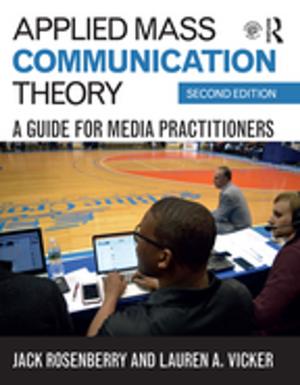| Author: | Marianne Lederer | ISBN: | 9781317641797 |
| Publisher: | Taylor and Francis | Publication: | April 8, 2014 |
| Imprint: | Routledge | Language: | English |
| Author: | Marianne Lederer |
| ISBN: | 9781317641797 |
| Publisher: | Taylor and Francis |
| Publication: | April 8, 2014 |
| Imprint: | Routledge |
| Language: | English |
This book, the English version of La traduction aujourd'hui (Hachette 1994), describes the interpretive theory of translation developed at the Paris Ecole Supérieure d'Interprètes et de Traducteurs (ESIT) over the last 35 years.
The theory identifies the mental and cognitive processes involved in both oral and written translation: understanding the text, deverbalizing its language, re-expressing sense. For the purposes of translation, languages are a means of transmitting sense, they are not to be translated as such. Although translation involves the use of correspondences, translators generally set up equivalence between text segments. The synecdochic nature of both languages and texts, a phenomenon discussed in the book, explains why translation is possible across language differences.
The many practical problems faced by translators, the difference between translation exercises used as a language teaching tool and professional translation, translating into a foreign language, and machine translation as compared to human translation are also discussed.
This book, the English version of La traduction aujourd'hui (Hachette 1994), describes the interpretive theory of translation developed at the Paris Ecole Supérieure d'Interprètes et de Traducteurs (ESIT) over the last 35 years.
The theory identifies the mental and cognitive processes involved in both oral and written translation: understanding the text, deverbalizing its language, re-expressing sense. For the purposes of translation, languages are a means of transmitting sense, they are not to be translated as such. Although translation involves the use of correspondences, translators generally set up equivalence between text segments. The synecdochic nature of both languages and texts, a phenomenon discussed in the book, explains why translation is possible across language differences.
The many practical problems faced by translators, the difference between translation exercises used as a language teaching tool and professional translation, translating into a foreign language, and machine translation as compared to human translation are also discussed.















